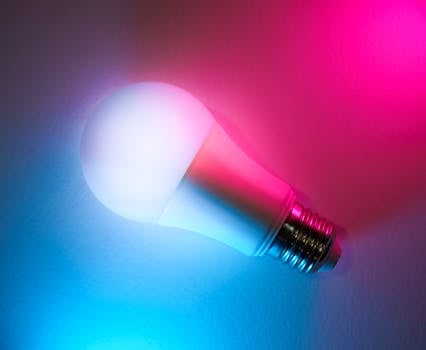
Harnessing Energy Efficiency: The Impact of Smart Devices on Your Home
In today’s world, where energy conservation is becoming increasingly important, the adoption of energy-efficient devices is more crucial than ever. Smart devices, particularly smart thermostats, have emerged as game-changers in the quest for energy efficiency. This blog post explores the benefits of these devices, how they work, and why integrating them into your home can lead to significant energy savings.
Table of Contents
- What are Smart Thermostats?
- Benefits of Smart Thermostats
- How Smart Thermostats Work
- Other Energy-Efficient Devices
- Conclusion
What are Smart Thermostats?


Benefits of Smart Thermostats

- Energy Savings: Smart thermostats can reduce energy bills significantly by optimizing heating and cooling schedules based on your habits and preferences.
- Remote Access: Control your home’s temperature from anywhere through a smartphone app, allowing for adjustments even when you’re away.
- Learning Capabilities: These devices learn your schedule over time, adjusting settings automatically to save energy when you’re not home.
- Energy Reports: Many smart thermostats provide insights into your energy usage, helping you understand where you can make further savings.
- Integration with Other Smart Devices: Smart thermostats can work in harmony with other smart home devices, creating a seamless, energy-efficient ecosystem.
How Smart Thermostats Work

- Wi-Fi Connectivity: This allows the thermostat to connect to the internet, enabling remote access and updates.
- Sensors: Built-in sensors detect occupancy and temperature, allowing the device to make real-time adjustments.
- Machine Learning: Over time, smart thermostats learn your preferences and habits, adjusting settings accordingly.
- Geofencing: Many models use geofencing technology to detect when you’re approaching your home, adjusting the temperature for your arrival.
Other Energy-Efficient Devices
While smart thermostats are a fantastic start, there are several other energy-efficient devices that can enhance your home’s efficiency:
- Smart Lighting: LED bulbs and smart lighting systems can be programmed to turn off when not in use, significantly reducing energy consumption.
- Smart Plugs: These allow you to control the power supply to various devices remotely, ensuring they aren’t consuming energy when not needed.
- Energy-Efficient Appliances: Investing in appliances with high energy efficiency ratings can lead to substantial savings over time.
- Smart Power Strips: These help manage standby power usage, cutting off power to devices that aren’t in use.
Conclusion
In summary, the rise of energy-efficient devices, particularly smart thermostats, represents a significant step towards sustainable living in our homes. By investing in these technologies, you not only reduce your carbon footprint but also enjoy the financial benefits of lower energy bills. As we move towards a more energy-conscious society, embracing smart home technology is not just a trend; it’s a necessity for a sustainable future. Start your journey towards energy efficiency today and make your home a model of modern living.







